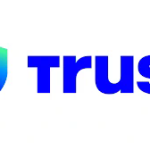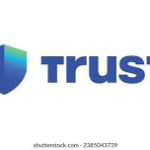# Understanding Trust Wallet: An In-Depth Analysis

## Introduction to Trust Wallet
Trust Wallet is a versatile and decentralized cryptocurrency wallet that enables users to store, manage, and trade various cryptocurrencies directly from their mobile devices. Established in 2017 and acquired by Binance in 2018, Trust Wallet has rapidly gained popularity among cryptocurrency enthusiasts for its user-friendly interface and robust security features. As one of the leading multi-cryptocurrency wallets, it supports a wide range of digital assets, including ERC20, BEP2, and BEP20 tokens. This article aims to provide a comprehensive analysis of Trust Wallet, focusing on its features, functionalities, and the process of withdrawing assets from the wallet.
## Features of Trust Wallet
### Multi-Currency Support
One of the standout features of Trust Wallet is its broad support for multiple cryptocurrencies. The wallet accommodates thousands of digital assets, allowing users to manage Bitcoin (BTC), Ethereum (ETH), and various altcoins seamlessly. Trust Wallet’s multi-currency capability enables users to diversify their crypto portfolios without the need for multiple wallets.
### Decentralization and Security
Trust Wallet is built on decentralized principles, ensuring that users maintain full control of their private keys. Unlike centralized exchanges, where users’ funds are held on the platform, Trust Wallet allows users to store their assets locally on their devices. This decentralization minimizes the risk of hacks and data breaches that are common in third-party exchanges. Additionally, Trust Wallet employs robust security measures, including biometric authentication and encrypted private keys.
### User-Friendly Interface
Trust Wallet is designed with user experience in mind. Its intuitive interface makes it easy for both beginners and experienced users to navigate and manage their digital assets. The wallet features a straightforward onboarding process, allowing users to set up their wallets quickly. Moreover, Trust Wallet’s simplified design aids users in tracking their asset performance, making it easier to manage investments.
### Built-in DApp Browser
Trust Wallet includes a built-in decentralized application (DApp) browser that allows users to access various DApps directly from the wallet. This feature enables users to participate in DeFi protocols, trade NFTs, and engage with other blockchain-based applications while maintaining custody of their assets. The integration of the DApp browser enhances the wallet’s functionality and provides users with additional avenues for making their digital assets work for them.
## How to Withdraw from Trust Wallet
### Step-by-Step Withdrawal Process
Withdrawing funds from Trust Wallet is a straightforward process. However, users must understand the steps involved to ensure a smooth transaction. Here’s a detailed walk-through of the withdrawal process:
1. **Open Trust Wallet**: Launch the Trust Wallet app on your mobile device.
2. **Select Asset to Withdraw**: Navigate to the wallet section and select the cryptocurrency you wish to withdraw.
3. **Initiate Withdrawal**: Tap on the asset to view its details. Look for the option labeled “Send” or “Withdraw” and select it.
4. **Enter Recipient Address**: Input the recipient’s wallet address to which you want to send your funds. It is crucial to copy this address accurately, as sending funds to the wrong address could lead to the permanent loss of assets.
5. **Set Amount**: Specify the amount you wish to withdraw. Trust Wallet may also provide options to toggle between the amount in your asset denomination and its equivalent in a fiat currency.
6. **Confirm Transaction**: Review the transaction details to ensure accuracy. Once everything is correct, confirm the transaction. Trust Wallet may require biometric authentication or a password.
7. **Transaction Fee**: Be aware that each withdrawal will incur a transaction fee, typically paid in the cryptocurrency you are sending. Trust Wallet calculates this fee automatically, and it’s crucial to account for it when specifying your withdrawal amount.
8. **Track Transaction**: After confirmation, you can track the status of your withdrawal through the “Transaction History” section of your wallet. This feature provides insight into the status and confirmation of the transaction on the blockchain.
### Common Issues During Withdrawal
While the withdrawal process is generally seamless, users may encounter certain issues that can complicate the experience. Here are some common problems and potential solutions:
1. **Incorrect Recipient Address**: Users may accidentally input an incorrect address. To mitigate this risk, always double-check the recipient’s address before initiating a withdrawal. Utilizing QR code scanning can also help ensure accuracy.
2. **Insufficient Funds**: Ensure that the wallet has enough balance to cover both the withdrawal amount and the associated transaction fee. If funds are insufficient, the transaction will be denied.
3. **Network Congestion**: During periods of high network activity, transactions may take longer than usual to confirm. In such cases, users can monitor network conditions and choose to wait for congestion to alleviate or adjust fees to prioritize their transaction.
4. **Limited Asset Support**: Some lesser-known or new cryptocurrencies may face restrictions on user withdrawals due to market fluctuations or liquidity issues. Always check for any restrictions imposed on specific assets within Trust Wallet.
## Analyzing Security Measures
### Private Keys and Custodianship
Trust Wallet is non-custodial, meaning users retain full ownership of their private keys. The private key acts as a digital signature, giving users control over their assets. Trust Wallet generates and stores private keys locally on the user’s device. Consequently, ensuring the security of these private keys is paramount for safeguarding crypto holdings.
### Encryption and Data Privacy
All user data within Trust Wallet is encrypted and stored on the device. This encryption provides an added layer of security, preventing unauthorized access to sensitive information. Furthermore, Trust Wallet does not collect any personal data from users, aligning with the principles of data privacy and decentralization.
### Biometric Security Features
Trust Wallet supports various biometric authentication methods, including fingerprint and facial recognition technology. These features enhance wallet security by adding an additional layer of protection against unauthorized access.
## Trust Wallet vs. Other Wallets
### Comparison with Hardware Wallets
While Trust Wallet offers excellent security features, it operates primarily as a software wallet. Hardware wallets, such as Ledger and Trezor, provide enhanced security by storing users’ private keys offline. Though hardware wallets are typically regarded as the gold standard for cryptocurrency storage, they are less user-friendly and can be more cumbersome than mobile wallets like Trust Wallet.
### Versatility Compared to Exchange Wallets
Exchange wallets, like those found on Binance or Coinbase, are convenient for trading; however, they are less secure than Trust Wallet. Users of exchange wallets do not control their private keys, making them vulnerable to hacks and potential insolvency of the exchange. Trust Wallet empowers users with full control over their keys and funds, promoting secure asset management.
## The Importance of Understanding Withdrawal Fees
### Types of Fees Involved
When withdrawing from Trust Wallet, users must be mindful of transaction fees. These fees can vary based on the network congestion and specific cryptocurrency used. Understanding the distinction between miner fees and withdrawal fees is vital when considering asset transfers.
### Managing Costs Effectively
To minimize withdrawal costs, users can select opportune times to initiate transactions, particularly when network activity is lower. Additionally, Trust Wallet may allow users to adjust the gas fees associated with Ethereum transactions, providing flexibility based on speed and cost preferences.
## Trust Wallet’s Role in the DeFi Ecosystem
### Integration with DeFi Protocols
Trust Wallet plays a pivotal role in the decentralized finance (DeFi) landscape. Users can access various DeFi platforms directly through the built-in DApp browser. This integration enables users to participate in yield farming, lending, borrowing, and swapping assets seamlessly.
### User Empowerment through DeFi
By using Trust Wallet for DeFi activities, users retain custody of their assets, avoiding risks associated with centralized platforms. This approach aligns with the broader ethos of cryptocurrency and blockchain technology, which emphasizes individual empowerment and financial sovereignty.
## Conclusion
Trust Wallet has established itself as a leading mobile cryptocurrency wallet, offering users a blend of convenience, security, and versatility. The ability to withdraw funds seamlessly enhances its appeal, enabling users to manage their digital assets effectively. While Trust Wallet holds many advantages, understanding its features, functionalities, and the intricacies of withdrawing funds is essential for maximizing its potential.
As the cryptocurrency landscape evolves, wallets like Trust Wallet will continue to play a critical role in facilitating asset management and participation in the DeFi ecosystem. By prioritizing security, decentralization, and user experience, Trust Wallet remains a compelling option for cryptocurrency enthusiasts seeking a comprehensive and secure solution for managing their digital assets.


